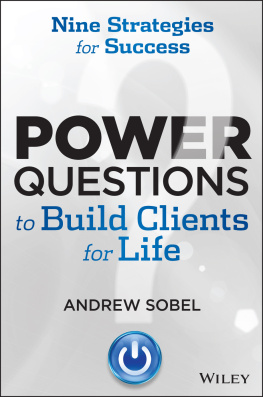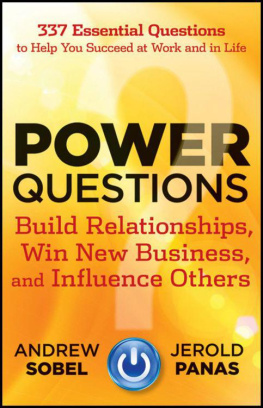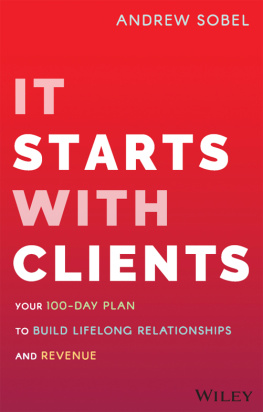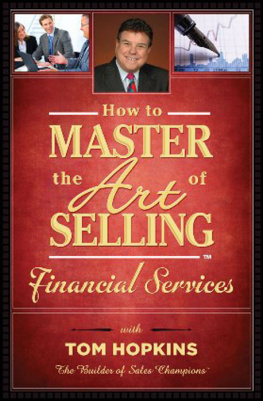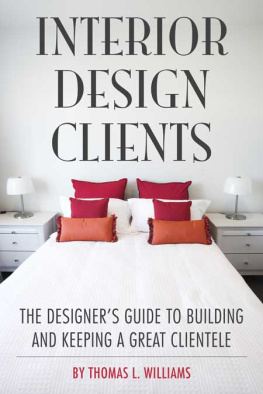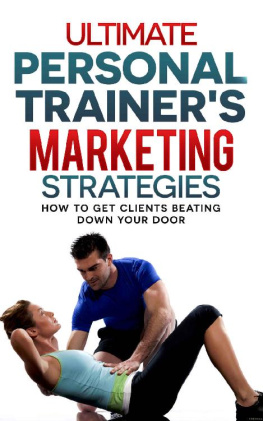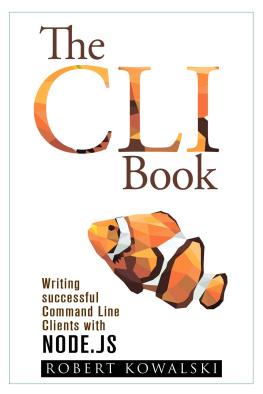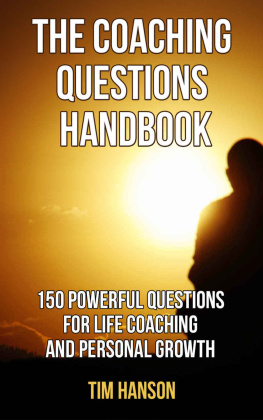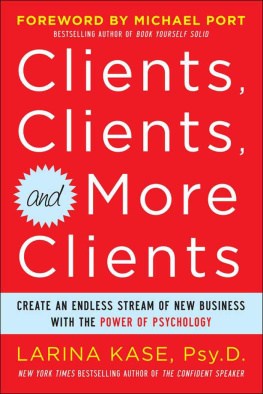
Cover design: Michael J. Freeland
Copyright 2013 by Andrew Sobel. All rights reserved.
Published by John Wiley & Sons, Inc., Hoboken, New Jersey.
Published simultaneously in Canada.
No part of this publication may be reproduced, stored in a retrieval system, or transmitted in any form or by any means, electronic, mechanical, photocopying, recording, scanning, or otherwise, except as permitted under Section 107 or 108 of the 1976 United States Copyright Act, without either the prior written permission of the Publisher, or authorization through payment of the appropriate per-copy fee to the Copyright Clearance Center, 222 Rosewood Drive, Danvers, MA 01923, (978) 750-8400, fax (978) 646-8600, or on the web at www.copyright.com. Requests to the Publisher for permission should be addressed to the Permissions Department, John Wiley & Sons, Inc., 111 River Street, Hoboken, NJ 07030, (201) 748-6011, fax (201) 748-6008, or online at www.wiley.com/go/permissions.
Limit of Liability/Disclaimer of Warranty: While the publisher and author have used their best efforts in preparing this book, they make no representations or warranties with the respect to the accuracy or completeness of the contents of this book and specifically disclaim any implied warranties of merchantability or fitness for a particular purpose. No warranty may be created or extended by sales representatives or written sales materials. The advice and strategies contained herein may not be suitable for your situation. You should consult with a professional where appropriate. Neither the publisher nor the author shall be liable for damages arising herefrom.
For general information about our other products and services, please contact our Customer Care Department within the United States at (800) 762-2974, outside the United States at (317) 572-3993 or fax (317) 572-4002.
Wiley publishes in a variety of print and electronic formats and by print-on-demand. Some material included with standard print versions of this book may not be included in e-books or in print-on-demand. If this book refers to media such as a CD or DVD that is not included in the version you purchased, you may download this material at http://booksupport.wiley.com. For more information about Wiley products, visit www.wiley.com.
ISBN 978-1-118-65715-7 (epdf); ISBN 978-1-118-65713-3 (epub); ISBN 978-1-118-65704-1 (emobi)
Chapter 1
You Can Build Big Relationships with Little Questions
The auditorium is packed. The company's top 200 executives have flown in from all over the world for their annual senior management retreat. That morning I have given a speech, and I am invited to stay for another hour to hear the CEO's talk.
Standing at the podium, the CEO, Roger, has concluded his overview of the company's strategic plan. We have about 20 minutes left. I'd be happy to take questions and have some discussion. After a pause, a few hands go up.
Roger, can you go back to that slide on the forecast? one of the seated executives asks. What are the assumptions about GDP growth for next year?
Another question follows: Can you say more about the field reorganization that we implemented last spring? I'm not sure people fully understand it. I think there's still some lingering concerns about the way it was done.
Roger is being forced to review old decisions. He's being asked to parse the fine details of his financials.
And more: Roger, can you go back over the decision to outsource our benefits management?
The backward-looking, nitpicking questions go on for another 15 minutes. Roger keeps checking the clock on the wall. I can see his frustration steadily rise. I raise my hand. I don't know Roger very wellwe've met a few times. But I'd like to build a relationship with him.
YesAndrew. You have a question?
I do. And it's a genuine one. I want to know what is really on Roger's mind. What motivates him. As you look ahead to the next year or two in your business, I ask, what are you personally most excited about?
Roger looks up. He's been hunching his shoulders, but now he stands up straight, stretching his large, six-and-a-half-foot frame. He smiles, and takes a deep breath. Well, he begins. Well, there is something. He describes an initiative that was not prominently featured in the formal plan. It's clearly the thing he is most enthusiastic about. The program he cares most about. He waxes on, now upbeat and energetic in his speech.
As we leave the auditorium, I walk with the crowd toward the door to the street. Suddenly I feel a large hand slap my back. Reallylike a baseball mitt, whacking my shoulder. I turn around, ready to confront the perpetrator. It's Roger, the CEO. He is striding by me, heading out to jump in a car.
Andrew, that was an excellent question. Thank you. He's now past me, heading to the exit. He looks back and continues talking: A very revealing question. I am so surprised I can't manage anything more substantial than a smile and an Oh, sure.
Call me, were his final words as he hurried away.
And I do call him. And that is the beginning of an ongoing relationship with his company. The catalyst was a simple question that's little yet big. It was a question that shifted the conversation from the analytical to the emotional, from the details to the big picture, from the past to the future.
That day, I wasn't particularly smart or clever. I didn't try and show off my expertise. I just asked a question.
Chapter 2
The Secret to Building Clients for Life
People often ask me, What's the one, single key to developing great client relationshipsto becoming a trusted advisor? I wish I had a magical answer to that question. Sometimes I think I ought to. After all, I've interviewed hundreds of executives about their most trusted relationships. I've studied many of the best professionals in the world at building clients for life, and I've written five books on the subject.
But it's like asking, What's the secret to raising children? or What's the one thing that makes a marriage last? Any single, all-encompassing answer you come up with is incomplete, and in and of itself could even be harmful. Endless love! could be a response to these two questions, but it's not so simple. We all know that love without any truth can actually ruin children and marriages!
I can tell you what most clients want. First, they want you to deliver. Second, they want someone they can trust. Third, they want value for money. And fourth, they want to work with someone they like. Those four things are nearly universal.
But knowing what clients want doesn't actually tell you how to give it to them. And even if you give your client all four of these things, the relationship doesn't always last. No, there's more.
I'll boil it down as much as I can. Here's the secret: You build clients for life through an ongoing process of getting to know your clients' businesses better and better; adding value again and again; and developing trusted, personal relationships with them. As you do this, you successfully confront a series of challenges. These include developing relationships at the senior levels in the organization, overcoming the inevitable crises, engaging in reflective client planning, and assessing the health of your relationship each year.
One of your main tools for accomplishing all these things is thoughtful questions. That's why they are the centerpiece of this short book.
In Power Questions: Build Relationships, Win New Business, and Influence Others, Jerry Panas and I set out a manifesto for how to use questions to transform your relationships at work and at home. The reaction from readers has been overwhelmingly positive, and many have asked us for more questions that are specific to developing client relationships through their entire lifecycle.
Next page
